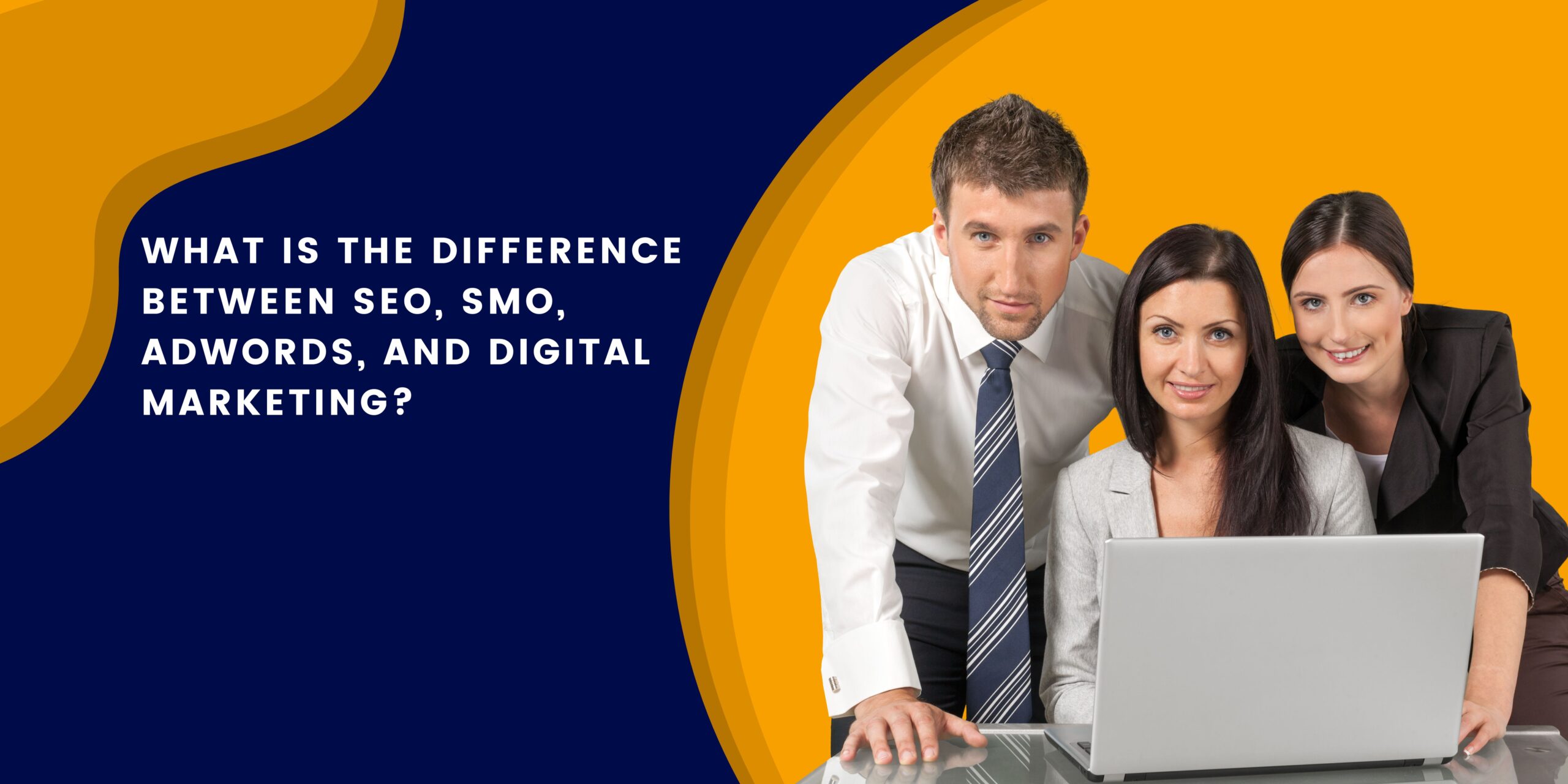In the fast-paced world of online business and marketing, staying ahead of the curve is essential. To achieve this, it’s crucial to comprehend the various strategies and techniques available. Four of the most prominent ones are SEO (Search Engine Optimization), SMO (Social Media Optimization), AdWords (now known as Google Ads), and digital marketing. While they all play crucial roles in enhancing online visibility and driving traffic, they have distinct purposes and methods. This article aims to shed light on the differences between these strategies.
SEO (Search Engine Optimization):
Search Engine Optimization (SEO) is a comprehensive approach to improving a website’s organic (unpaid) search engine rankings. It involves a series of strategies and techniques aimed at making a website more appealing to search engines like Google, Bing, and Yahoo. The ultimate goal is to increase the website’s visibility and ranking in search engine results pages (SERPs). SEO can be further divided into on-page and off-page SEO.
- On-Page SEO: This involves optimizing individual web pages to improve their ranking. It includes optimizing content, meta tags, headers, and images. Ensuring that the website is mobile-friendly and has a fast loading speed is also part of on-page SEO.
- Off-Page SEO: Off-page SEO focuses on building the website’s authority and reputation. This is often done through link-building, social media engagement, and other external factors that signal to search engines that the website is trustworthy and relevant.
Key Differentiators:
- Organic Traffic: SEO primarily relies on organic traffic generated through search engines. It doesn’t involve paid advertising.
- Long-Term Strategy: SEO is a long-term strategy that takes time to yield results but can provide sustainable traffic over time.
- Content-Centric: It emphasizes the importance of high-quality, relevant content that caters to the needs of the target audience.
SMO (Social Media Optimization):
Social Media Optimization (SMO) focuses on harnessing the power of social media platforms to increase brand visibility and engagement. SMO strategies are designed to enhance a brand’s presence on platforms like Facebook, Twitter, Instagram, LinkedIn, and others.
- Content Sharing: SMO involves creating and sharing content that resonates with the target audience on social media. This includes posts, images, videos, and stories.
- Community Building: Building a strong and engaged social media following is crucial in SMO. It involves responding to comments, engaging in discussions, and fostering a sense of community around the brand.
Key Differentiators:
- Platform-Centric: SMO is platform-specific and focuses on tailoring content for each social media network.
- Immediate Interaction: SMO allows for immediate interaction with the audience through comments, likes, shares, and direct messages.
- Paid Advertising Optional: While SMO primarily involves organic engagement, paid advertising on social media is also an option to boost reach.
AdWords (Google Ads):
AdWords, which has been rebranded as Google Ads, is a paid advertising platform developed by Google. It enables businesses to display ads on Google’s search engine results pages, websites in the Google Display Network, and YouTube.
- Pay-Per-Click (PPC): Google Ads operates on a PPC model, where advertisers pay only when users click on their ads. This makes it a highly cost-effective method for reaching a targeted audience.
- Keyword Targeting: Advertisers bid on keywords related to their products or services, and their ads appear when users search for those keywords.
Key Differentiators:
- Paid Advertising: Google Ads is a paid advertising platform. Advertisers set budgets and pay for clicks or impressions.
- Immediate Results: Unlike SEO, which takes time to yield results, Google Ads can drive immediate traffic to a website.
- Highly Targeted: Advertisers can target specific keywords, demographics, locations, and devices, ensuring their ads reach the right audience.
Digital Marketing:
Digital marketing is a broader term that encompasses all online marketing efforts, including SEO, SMO and paid advertising (e.g., Google Ads). It’s a comprehensive strategy that leverages various online channels to promote a brand, product, or service.
- Multichannel Approach: Digital marketing often combines multiple online channels, such as social media, email marketing, content marketing, SEO, and paid advertising, to create a cohesive marketing strategy.
- Data-Driven: Digital marketing relies heavily on data and analytics to measure the effectiveness of campaigns and make data-driven decisions.
Key Differentiators:
- Comprehensive: Digital marketing is an all-encompassing strategy that includes various online marketing techniques.
- Flexibility: It allows businesses to adapt and optimize their strategies based on real-time data and market trends.
- Scalability: Digital marketing can be scaled up or down to match a company’s budget and goals.
In conclusion, while SEO, SMO, AdWords (Google Ads), and digital marketing all contribute to online success, they have distinct purposes and methods. SEO focuses on improving organic search engine rankings, SMO harnesses social media platforms, Google Ads provides paid advertising opportunities, and digital marketing is the overarching strategy that combines these and other online marketing techniques. Understanding the differences between these strategies is crucial for businesses to develop effective online marketing campaigns and achieve their goals in the digital realm.




